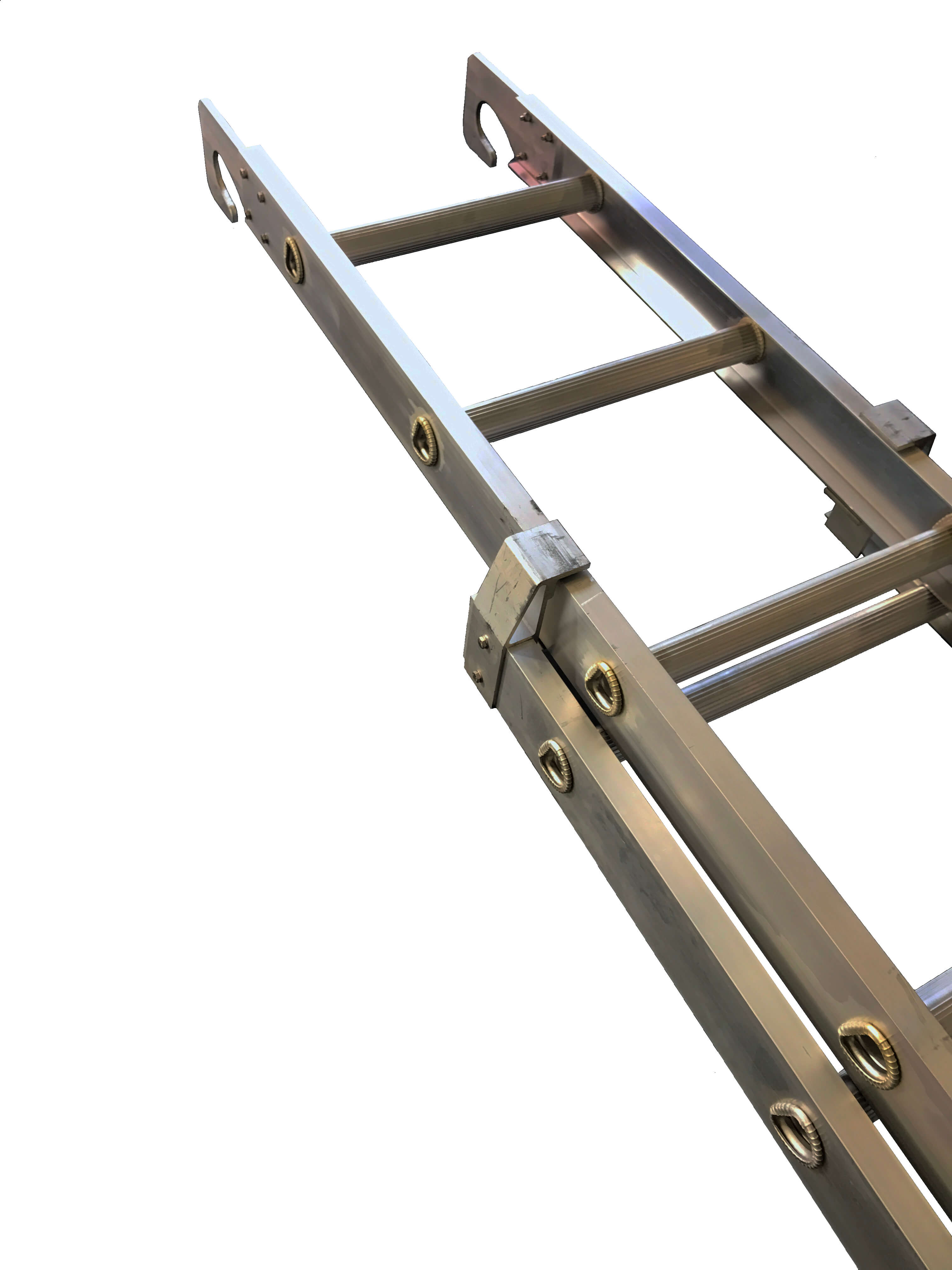Ladders
Mobile scaffolding is wonderful for providing a safe working platform for any kind of purpose. The mode of ascent continues to be by means of a ladder. There are however quite a few points to consider in your purchase of a scaffold when you are looking at the type and fittings of the scaffolding ladder. An internally fitted scaffolding ladder is an essential part of any mobile scaffold.
As soon as your scaffolding Top Working Platform (TWP) height reaches or exceeds two metres, you will need a ladder that is internally mounted to access the platform. The rungs on the ends of the scaffolding are not the safest way to ascend, and leaning a ladder against the exterior of the scaffold is extremely dangerous. Internal placement of the ladder keeps your weight constantly within the planned area of the scaffold weight bearing framework, and you arrive on the working platform with handrails already in place to increase safety. Most commonly, access to the platform will be via a trapdoor within the platform, increasing the working area and reducing the area that is not weight bearing on the working platform. Trapdoors should always be in the closed position unless someone is traversing the ladder.
Ladder Hooks
 Scaffolding ladders are designed to be attached at the top handrail of the working platform that they access. This ensures that there are adequate rungs and handholds in the appropriate position for easy and safe ascent and descent on the ladder.
Scaffolding ladders are designed to be attached at the top handrail of the working platform that they access. This ensures that there are adequate rungs and handholds in the appropriate position for easy and safe ascent and descent on the ladder.
Scaffolding Ladders should be braced to provide an easy and comfortable angle increasing safety and ease of use. The brace should also provide sufficient stability to prevent bending, yawing or swaying of the ladder during use.
The lowest ladder on a mobile scaffold should be attached to the scaffold in such a way as to provide a rung that is an easy step from the base upon which the scaffold stands, but so that the ladder feet are clear of the ground to enable the scaffolding to be maneuvered on it’s wheels without the ladder snagging or dragging in any way.
Ladder Construction
We recommend the use of aluminium ladders for mobile scaffolding, and recommend that you inspect the ladder construction carefully on each occasion of erecting the scaffold. Like any preformed component the inspection should look for any bending, cracking, distortion or breakages along the length of the ladder. Any sign of this sort of damage will make the ladder unsafe for further use.




